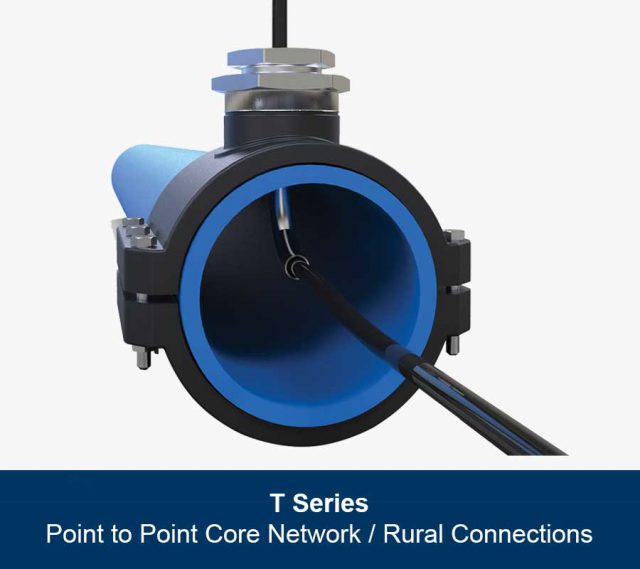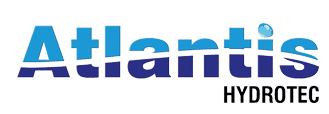
The Atlantis T-Series is designed to bring a bundle of fiber optic cables to small hamlets or villages through a central water supply system.
One of the biggest barriers to making fiber-to-the-home broadband service available in suburban and rural areas is the cost to dig a trench or string a cable across a property to reach the customer. A British company has patented a clever solution to this last-mile problem by inserting a tiny conduit into pre-existing water supply lines that contains enough optical fiber to power tens of gigabits of internet speed into even the most difficult to reach homes and businesses.
The Craley Group’s Atlantis Hydrotec solution places two temporary holes in the water supply line at the street connection and inside the home through which the non-toxic, environmentally friendly conduit containing the optical fibers passes with no effect on the water supply. The impact on the homeowner is limited to a quick visit to install a connection from the home’s incoming water pipe to an internet router. No trenching or digging is required, and the cost savings from not having to bring in heavy digging equipment, obtain permits to manage traffic-disrupting digs, or tear up lawns and gardens are as high as 70%, making fiber installation cheap and fast for providers.
Craley’s inexpensive solution can make the difference between getting rural fiber broadband or not. In suburban and rural areas, the company’s “T-Series” conduit can be installed in a pre-existing neighborhood or village water system, with individual connections possible for each neighborhood, apartment, home and/or business along a route up to two kilometers long. Up to 288 individual optical fibers are available for use by the provider in each segment. Multiple segments can be used to further extend the network as needed.
Repurposing existing utility infrastructure is not a new idea. Using sewer pipes to accommodate fiber optic cables has been around for several years, and some communities have used them for delivering broadband. But not every project has been successful, and using water pipes for broadband may run into similar problems.
 The two primary reasons repurposing infrastructure projects like these fail are money and politics, and it is often for both reasons. If the water authority in an area objects to its infrastructure being tampered with, it is unlikely a provider will win permission to use Craley’s solution. Some water managers may fear the physical connections to existing water pipes could weaken or damage them, although Craley insists this is not the case. In communities where the water supply is a publicly owned resource, there may be political objections to allowing private companies to use public infrastructure — problems that might be resolved through contracts that include provider payments. But if those amounts are too high, licensing Craley’s method may no longer deliver the promised potential savings. In other cases, it may simply come down to a managerial “control” issue.
The two primary reasons repurposing infrastructure projects like these fail are money and politics, and it is often for both reasons. If the water authority in an area objects to its infrastructure being tampered with, it is unlikely a provider will win permission to use Craley’s solution. Some water managers may fear the physical connections to existing water pipes could weaken or damage them, although Craley insists this is not the case. In communities where the water supply is a publicly owned resource, there may be political objections to allowing private companies to use public infrastructure — problems that might be resolved through contracts that include provider payments. But if those amounts are too high, licensing Craley’s method may no longer deliver the promised potential savings. In other cases, it may simply come down to a managerial “control” issue.
Consumer confusion can also pose a problem, especially among those that believe any exposure to electronic signals of any kind will impact their health. Fiber optics, of course, transports light signals, but that fact may not be understood by everyone.
 There are also examples of communities that had to abandon sewer pipe conduits in favor of traditional trenching because of difficult to overcome objections from local authorities that manage the sewer system, fearing sewer cables will create blockages or other obstructions. Craley hopes the fact its system does not place optical fibers in contact with the water supply and is very unlikely to be an obstacle to the delivery of safe drinking water will overcome traditional skepticism. The technology has proven effective in a small community near Barcelona, Spain, where fiber to the home service was installed using Craley’s system.
There are also examples of communities that had to abandon sewer pipe conduits in favor of traditional trenching because of difficult to overcome objections from local authorities that manage the sewer system, fearing sewer cables will create blockages or other obstructions. Craley hopes the fact its system does not place optical fibers in contact with the water supply and is very unlikely to be an obstacle to the delivery of safe drinking water will overcome traditional skepticism. The technology has proven effective in a small community near Barcelona, Spain, where fiber to the home service was installed using Craley’s system.
It didn’t hurt that the company installing the fiber optic system was the same one that maintains and operates the local water system, which cut through any potential red tape or concerns.
“We have been most impressed with this system and during the installation we gained great insight into the product, installation techniques, and our engineering staff got on-the-job training,” said Jose Maria, the general manager of ATCA, the local water company. “We can really see the advantages of this solution.”
Additional field trials are also underway in New Zealand.
This Craley Group-produced video talks about the benefits of using existing utility infrastructure instead of trenching to supply fiber optic broadband to homes. (3:21)
This company produced video explores the problems faced by rural homeowners with no or inadequate broadband, and how using innovative methods of bringing fiber to the home need not be too expensive. (3:12)


 Subscribe
Subscribe
I’m not liking this. I really don’t want an ISP touching my water supply. At BEST it ain’t going to be sanitary when they get done with it…
@Richard is exactly correct in response to @Josh. It IS VERY sanitary! Installation procedure require it to be and the materials used for the conduit (which is what this technology is) is the same exact materials used for water lines. ISP will not be touch your water supply.
@BobInIllinois is also correct, but there are MANY small communities that have their own self contained water supplies, let alone municipalities, that make this VERY viable! And also making fiber a MUCH more reasonable cost when installing.
It sounds pretty cool, but even in the outer suburbs in many places people have well water and there are no water lines to use.
Also as @Josh puts it, there are safety issues too. Many electrical wires are cladded with plastics that contain plasticizers that are known endocrine disrupters.
Practical issue: Many, possibly a majority of, rural US residents have their own wells and do not have a water company supplying water to them. So, this solution would not be useful for those folks.
The solution is installed and maintained by the water company. The solution uses a pipe in the water pipe which is made from the same material as the pipe or from an approved material. The fiber cable is subsequently installed within this pipe and therefore the fiber never comes into contact with the water.
The solution can be used on its own to connect areas or in conjunction with other technologies to reach the final destination.
The technology is being rolled out in Spain to great success. You can read about the completed projects here http://www.craley.com